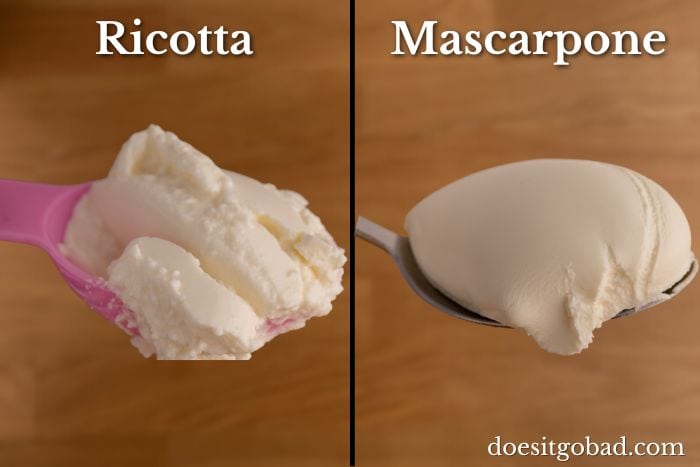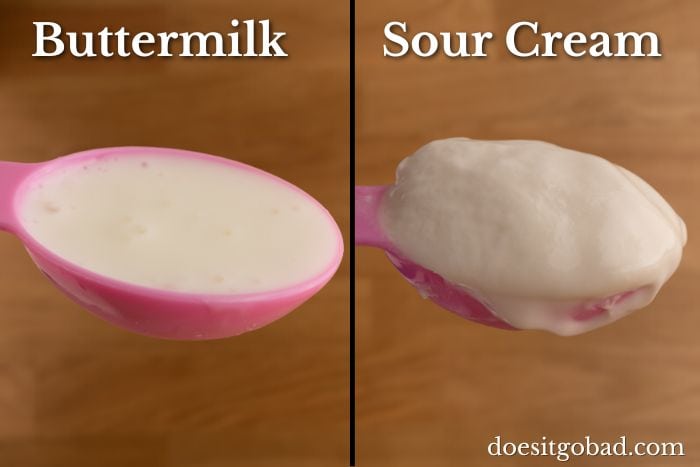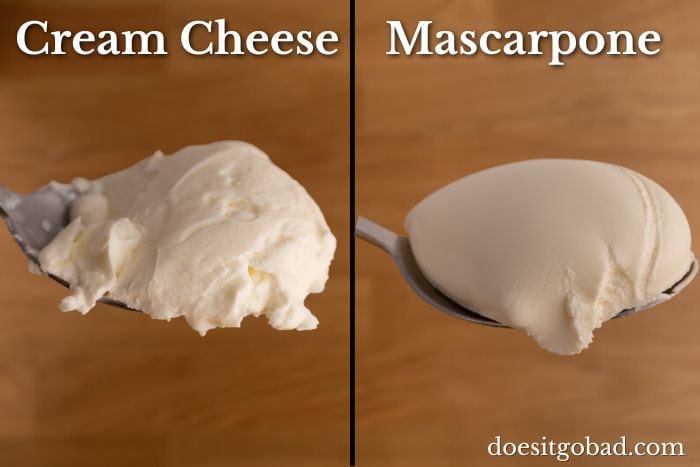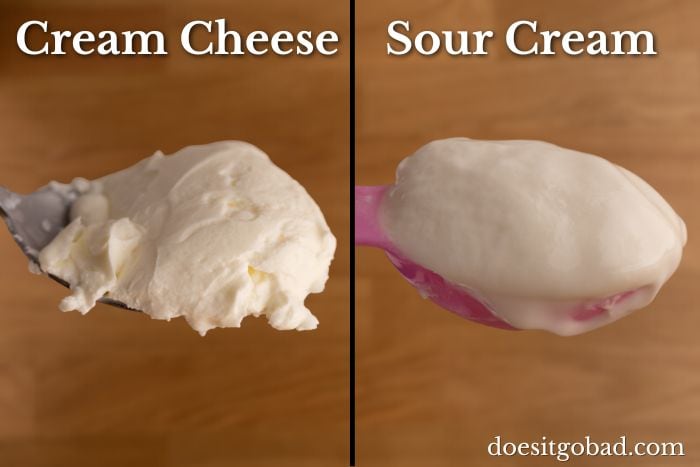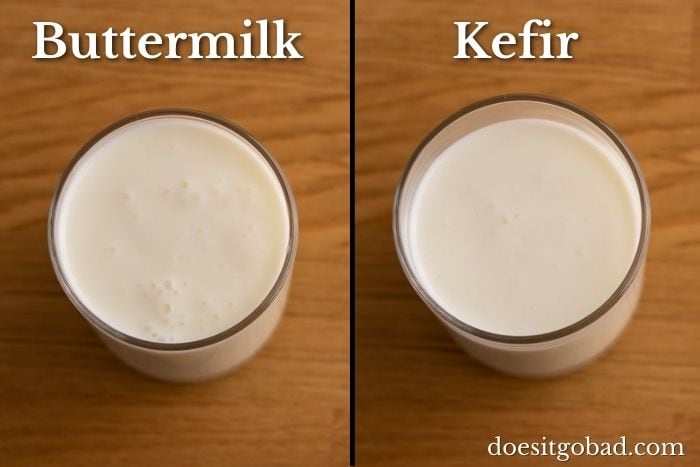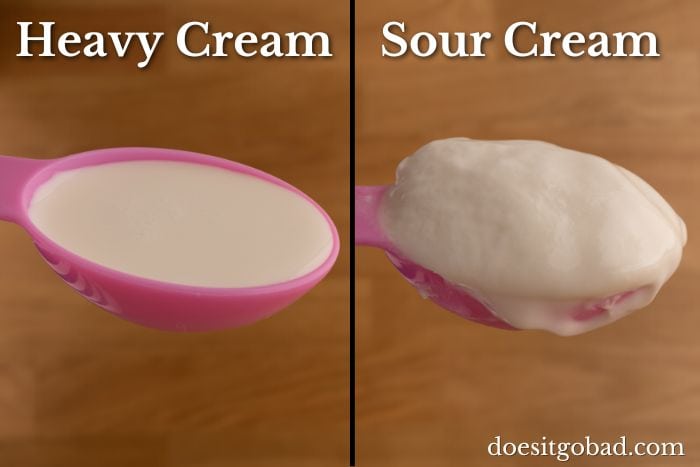Heavy Cream vs. Evaporated Milk: Differences and When to Sub
Here’s all about the similarities and differences between evaporated milk and heavy cream. Learn how they differ and when and how you can substitute one with the other.
Say a recipe calls for evaporated milk, but heavy cream is similar in taste and texture. So can you use it instead?
Or maybe you need some heavy cream for a recipe, but the closest thing you can find in your kitchen is a can of evaporated milk. Can you use it as a substitute?
Let’s jump right in.
Is Evaporated Milk the Same as Heavy Cream?
Evaporated milk and heavy cream are two entirely different dairy products. Evaporated milk is milk with 60 percent of its water removed, while heavy cream is made from cream, which is separated from milk in the production process.
Because of that, the two products have very different nutritional profiles and uses, though you can substitute one with the other in some uses.
In short, heavy cream is much richer because of its high-fat content, while evaporated milk is thinner but slightly sweeter and has a caramelized flavor that you can’t find in cream. Plus, heavy cream is sold refrigerated and lasts only a couple of weeks, while evaporated milk is sold in shelf-stable cans.
That’s the high-level overview. Later in the article, I discuss the similarities and differences in much more detail.
For now, let’s talk about swapping one with the other.
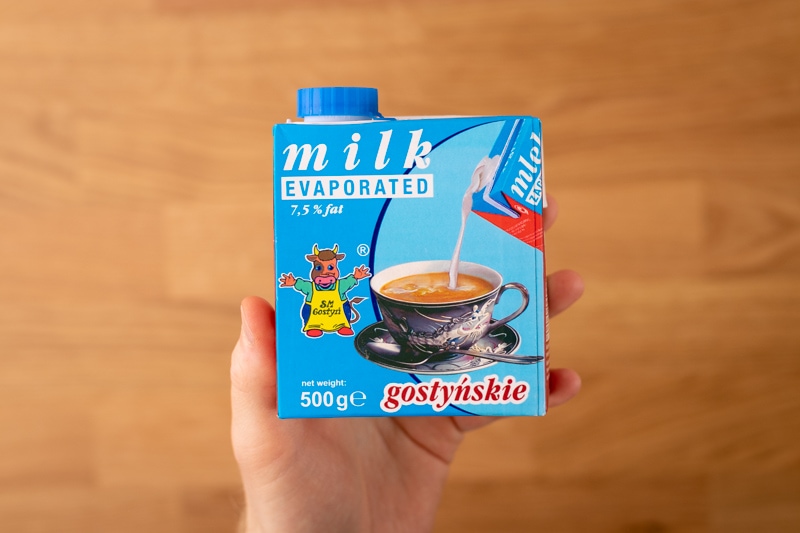
When and How to Substitute
Despite what some sites may tell you, evaporated milk is not a good general substitute for heavy cream, and neither is the case the other way around.
But sometimes you can use one instead of the other without affecting the dish you’re cooking that much.
Let’s get into the details.
Can I Substitute Evaporated Milk for Heavy Cream?
You can substitute an equal amount of evaporated milk for heavy cream in most soups and sauces. For other uses, you need to consider how the thinner texture and sweeter flavor will affect the dish. And don’t even try this swap if there’s any whipping involved.
For starters, evaporated milk doesn’t whip, so if you need whipped cream, you’re out of luck.
Next, if you examine the list of typical uses of evaporated milk and heavy cream below, you’ll notice that the only common items are soups, sauces, some baked goods, and adding to coffee or tea. That’s why I suggest only subbing in evaporated milk in those.
The texture and taste of the resulting dish will be a bit different, but that shouldn’t be a big deal.
In other uses, the differences between the two are usually too much to ignore without adjusting other ingredients.
For instance, if you used evaporated milk in a salad dressing, it’d likely end up watery and sweeter than you’d like. While in baked goods, the taste should be okay, but the lack of richness would affect the end result.
(If it’s some low-stakes weekend baking, give it a try, though!)
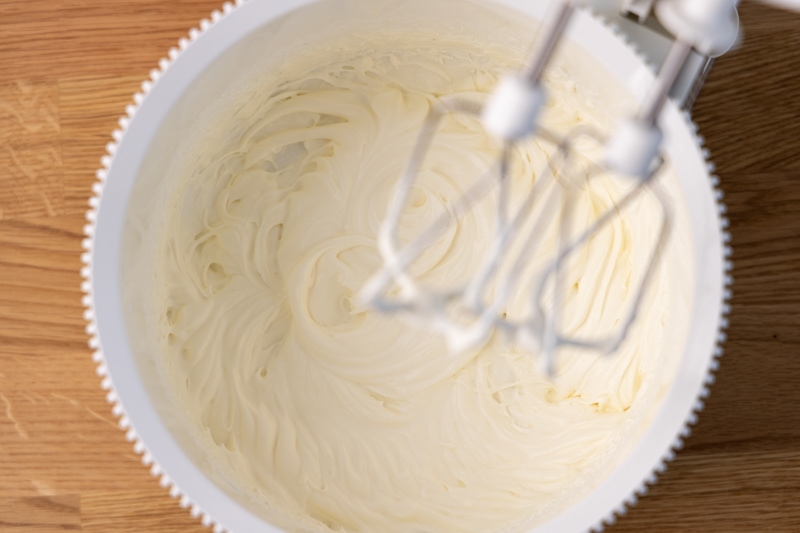
Overall, if you know the ins and outs of the dish you’re working on, you can try using evaporated milk combined with melted butter (or any other fat source) in cooked and baked dishes. This mixture should be rich enough, though the flavor will be noticeably different.
Finally, instead of trying to substitute heavy cream with another product, try googling a phrase such as “XYZ recipe no heavy cream.” In many cases, you can find similar recipes that don’t rely on heavy cream, and who knows, maybe you already have all the ingredients needed for one of them.
Need whipped cream but no heavy cream on hand? If you have cream cheese and butter on hand, a whipped cream cheese frosting might do in a pinch.
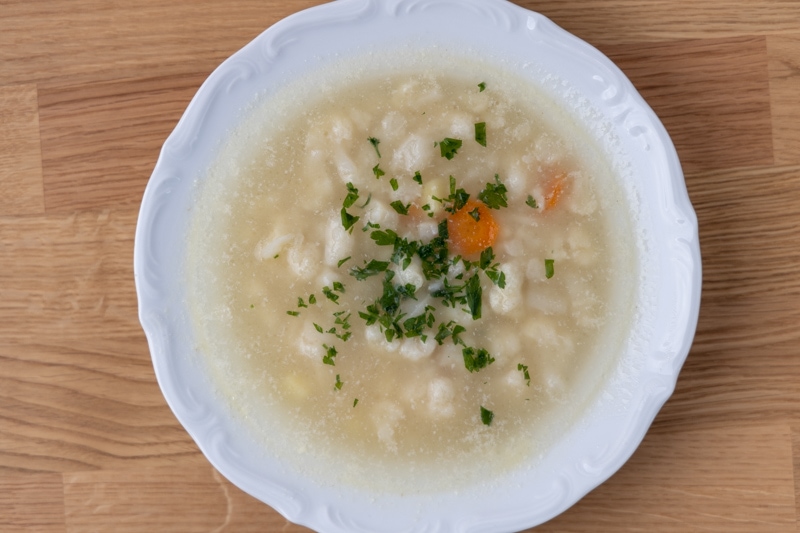
Can I Substitute Heavy Cream for Evaporated Milk?
You can substitute heavy cream for evaporated milk at a 1:1 ratio in cooked and baked dishes, but keep in mind they’ll turn out thicker and richer. Alternatively, you can dilute heavy cream with milk at a 1:1 up to 1:3 heavy cream-to-milk ratio for a substitute with similar richness.
In either case, the flavor will be different, as heavy cream doesn’t have that caramel note you can find in evaporated milk, but the mixture should do in a pinch.
As usual, the more ingredients are mixed into the evaporated milk in your recipe, the higher the chance the swap will turn out okay.
But if the recipe uses evaporated milk to add some dairy flavor without adding too much water, heavy cream will likely be a suboptimal substitute. If that’s the case, you need something else.
If you have some milk on hand, you can make homemade evaporated milk in half an hour or so. I discuss that in my article on evaporated milk vs. regular milk.
Once again, if using another recipe is an option, I suggest paying uncle Google a visit. Want to make fudge? Google a phrase like “fudge heavy cream,” and you’re likely to find at least a couple of decent recipes that use heavy cream instead of evaporated milk (or condensed milk, in the case of fudge recipes).
Evaporated Milk vs. Heavy Cream: Differences and Similarities
Now that we’ve covered subbing evaporated milk with heavy cream and the other way around, let’s talk about the differences and similarities.
Below, I divided the info on evaporated milk vs. heavy cream into a few sections so that it’s easy to find what you’re looking for.
Taste and Texture
Both evaporated milk and heavy cream are noticeably thicker than regular milk, but heavy cream is much richer than evaporated milk. That’s why I suggested diluting it with milk before using it as a substitute.
Here’s how the two compare:
Taste-wise, evaporated milk tastes like a more intense version of milk (which it is), while heavy cream is only slightly sweet. The thing that makes the two noticeably different, besides the richness, is the caramelized flavor of evaporated milk.
(That flavor note is a result of the Maillard reaction caused by high-heat processing.)
If that caramel flavor is a must, consider melting a caramel candy or two and stirring them into the heavy cream mixture you plan on using as a substitute. Or adding it at any other point in the recipe where it makes sense.
Uses
| Evaporated milk | Heavy Cream |
|---|---|
| sauces that can be added to almost anything (think pasta, casseroles, etc.) | to make whipped cream for desserts and such |
| added to soups, including veggie soups, but also chowders | coffee creamer |
| cake toppings | soups |
| desserts, puddings | salad dressings |
| pies, cakes, etc. | pan sauces |
| as tea or coffee whitener | pancakes, egg scrambles |
| smoothies | baked goods like muffins, pies, etc. |
Both ingredients have a long list of possible uses and are used in sweet and savory dishes.
Evaporated milk tastes slightly sweeter than milk, which makes it a natural fit for sweet recipes, like desserts, pies, cakes, and the like. But it’s not overly sweet, so it still works great in sauces, casseroles, and all sorts of soups.
Heavy cream is primarily used to make whipped cream, but it’s also often used to add richness and flavor to soups, pan sauces, or salad dressings.
Long story short, there’s a bit of overlap in how both are used, but not that much.
If you need richness (and therefore fat), heavy cream is what you’re looking for. And if you need concentrated dairy flavor, only evaporated milk fits the bill.
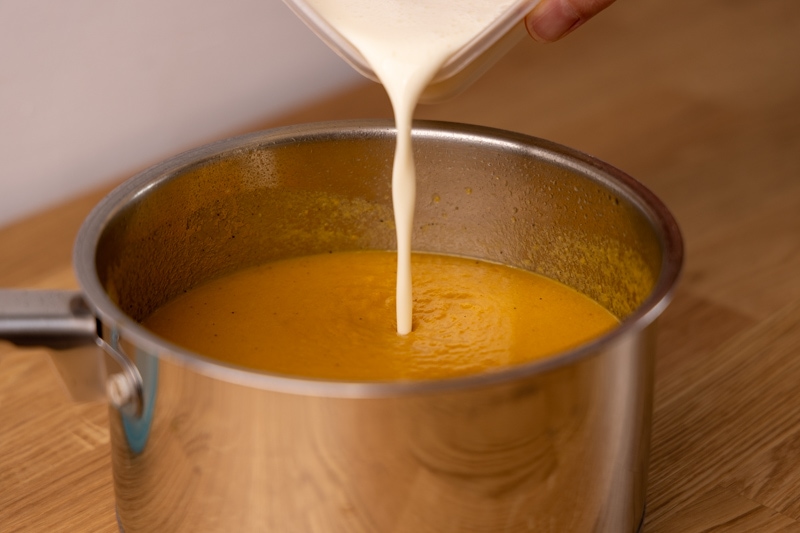
Nutrition
| Evaporated milk [source] | Heavy Cream [source] | |
|---|---|---|
| Energy | 134kcal | 340kcal |
| Protein | 6.81g | 2.84g |
| Fat | 7.56g | 36g |
| Carbohydrates | 10g | 2.84g |
Heavy cream has more than four times more fat than evaporated milk. That difference makes it a much more calorie-dense product with more than twice the calories of evaporated milk.
So if you’ve been wondering how come heavy cream is much richer, its fat content is your answer.
The difference in caloric content between the two is why various sites recommend evaporated milk as a healthier alternative to heavy cream. The idea is nice, but as I described in the section on substitutions, it only works in specific contexts.
Furthermore, while you can find fat-free evaporated milk, I’m yet to find fat-free heavy cream. Without the fat, that wouldn’t be cream anymore, plus it wouldn’t whip.
In other words, richness and lots of fat are the very essence of heavy cream, and you lose most of that by subbing in evaporated milk. That’s okay in some recipes but not in others.
Production
The production of both evaporated milk and heavy cream starts with milk, as is the case with dairy products in general.
If you leave unprocessed milk sitting for some time, a higher-fat layer forms on the top. That’s cream.
That cream is then separated and processed separately before the milk is homogenized.
(In industrial production, the separation process is accelerated, so there’s no need to wait until the cream rises to the top.)
To make heavy cream, all you need to do with that cream is to reduce the amount of water so that the fat percentage is sufficiently high. After a bit of further processing, that cream is then packaged and sold.
I’m painting in broad strokes, of course.
To make evaporated milk, we start with the homogenized milk I mentioned earlier. Then we remove some of its water content. Sixty percent, to be precise.
After that treatment, the product is chilled, stabilized, sterilized, and ends up in the can you can find in the grocery store.
So since evaporated milk is, broadly, milk after some of its water content has been evaporated (hence the name), you can easily make it at home. All you need is a saucepan and 30-odd minutes of simmering to get it to the right consistency.
If you’re interested in making homemade evaporated milk, here’s a detailed recipe and a video.
Rotten Records: Share Your Snap!
Caught some food past its prime? Upload your photo to “Rotten Records” and help others spot the signs of spoilage. Every image makes our food community safer and more informed!
